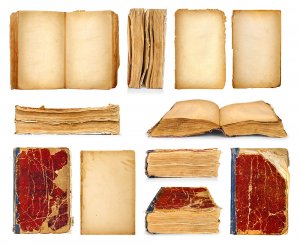
Midrash is sometimes imagined as an unchanging mode of ancient Jewish biblical interpretation—influencing Jewish thought from the later books of the Bible through the Middle Ages. The research presented in this session offers a new picture on the evolving relationship between the Bible, midrash, and Jewish history.
Jordan Rosenblum, University of Wisconsin-Madison
Is Pesher Habakkuk "Midrash"?
Answer: No
Jordan D. Rosenblum is Associate Professor and Belzer Professor of Classical Judaism at the University of Wisconsin-Madison. His research focuses on the literature, culture, and history of the rabbinic movement. His first book, Food and Identity in Early Rabbinic Judaism (Cambridge University Press, 2010; paperback: 2014), explores the intersection between early rabbinic food regulations and identity construction. He is currently completing a book, entitled The Jewish Dietary Laws in the Ancient World (under contract with Cambridge University Press), which examines ancient critiques and apologies for biblical food regulations. In addition, he is the co-editor of Religious Competition in the Third Century C.E.: Jews, Christians, and the Greco-Roman World (Vandenhoek and Ruprecht, 2014).
Tzvi Novick, Notre Dame
Canon to Right of Them, Canon to Left of Them: Liturgical Poetry in Late Antique Palestine
Late antique liturgical poetry—piyyut—is intensely biblical. Indeed, like the floors of the synagogues in which they were performed, liturgical poems might be thought of as biblical mosaics, pieced together from words and phrases from the Bible. The assimilation of the Bible into piyyut becomes increasingly mediated by rabbinic interpretation, and in this sense piyyut can be considered an offshoot of the burgeoning corpus of rabbinic midrash. But piyyut is not simply biblical pastiche, or second-hand midrash. Piyyut selects and manipulates its midrashic sources to suit its distinctive needs. Moreover, and as importantly, piyyut is a praxis, with its own traditions, even a nascent canon. Finally, piyyut, as prayer, constructs God as a listening and even a speaking presence in the synagogue, and thus rubs against the historical claim at the basis of the Bible’s canonical authority, namely, the end of prophecy. My paper examines these ways in which piyyut sets itself apart from the Bible and from the rabbinic interpretation thereof.
Tzvi Novick occupies the Abrams Chair of Jewish Thought and Culture at the University of Notre Dame. His research focuses on rabbinic and para-rabbinic literature from late antiquity, with special interests in law and liturgy. He has published a book on law and ethics in early rabbinic literature, and numerous articles on topics in the Hebrew Bible, Second Temple exegesis, rabbinic literature, and piyyut.
Respondent: Rachel Neis, Associate Professor in History and Judaic Studies, University of Michigan.
Sponsored by: Frankel Center for Judaic Studies, Near Eastern Studies, American Academy of Jewish Research, American Academy of Religion, LSA Dean’s Office, UMOR Small Grants to Support Major Conferences, Rackham Dean’s Strategic Initiative Fund.
If you have any questions or you would like to receive the rest of the 2016-2017 calendar for the Beyond the Book speaker series, contact Rebecca Scharbach Wollenberg (rwollenb@umich.edu).
Jordan Rosenblum, University of Wisconsin-Madison
Is Pesher Habakkuk "Midrash"?
Answer: No
Jordan D. Rosenblum is Associate Professor and Belzer Professor of Classical Judaism at the University of Wisconsin-Madison. His research focuses on the literature, culture, and history of the rabbinic movement. His first book, Food and Identity in Early Rabbinic Judaism (Cambridge University Press, 2010; paperback: 2014), explores the intersection between early rabbinic food regulations and identity construction. He is currently completing a book, entitled The Jewish Dietary Laws in the Ancient World (under contract with Cambridge University Press), which examines ancient critiques and apologies for biblical food regulations. In addition, he is the co-editor of Religious Competition in the Third Century C.E.: Jews, Christians, and the Greco-Roman World (Vandenhoek and Ruprecht, 2014).
Tzvi Novick, Notre Dame
Canon to Right of Them, Canon to Left of Them: Liturgical Poetry in Late Antique Palestine
Late antique liturgical poetry—piyyut—is intensely biblical. Indeed, like the floors of the synagogues in which they were performed, liturgical poems might be thought of as biblical mosaics, pieced together from words and phrases from the Bible. The assimilation of the Bible into piyyut becomes increasingly mediated by rabbinic interpretation, and in this sense piyyut can be considered an offshoot of the burgeoning corpus of rabbinic midrash. But piyyut is not simply biblical pastiche, or second-hand midrash. Piyyut selects and manipulates its midrashic sources to suit its distinctive needs. Moreover, and as importantly, piyyut is a praxis, with its own traditions, even a nascent canon. Finally, piyyut, as prayer, constructs God as a listening and even a speaking presence in the synagogue, and thus rubs against the historical claim at the basis of the Bible’s canonical authority, namely, the end of prophecy. My paper examines these ways in which piyyut sets itself apart from the Bible and from the rabbinic interpretation thereof.
Tzvi Novick occupies the Abrams Chair of Jewish Thought and Culture at the University of Notre Dame. His research focuses on rabbinic and para-rabbinic literature from late antiquity, with special interests in law and liturgy. He has published a book on law and ethics in early rabbinic literature, and numerous articles on topics in the Hebrew Bible, Second Temple exegesis, rabbinic literature, and piyyut.
Respondent: Rachel Neis, Associate Professor in History and Judaic Studies, University of Michigan.
Sponsored by: Frankel Center for Judaic Studies, Near Eastern Studies, American Academy of Jewish Research, American Academy of Religion, LSA Dean’s Office, UMOR Small Grants to Support Major Conferences, Rackham Dean’s Strategic Initiative Fund.
If you have any questions or you would like to receive the rest of the 2016-2017 calendar for the Beyond the Book speaker series, contact Rebecca Scharbach Wollenberg (rwollenb@umich.edu).